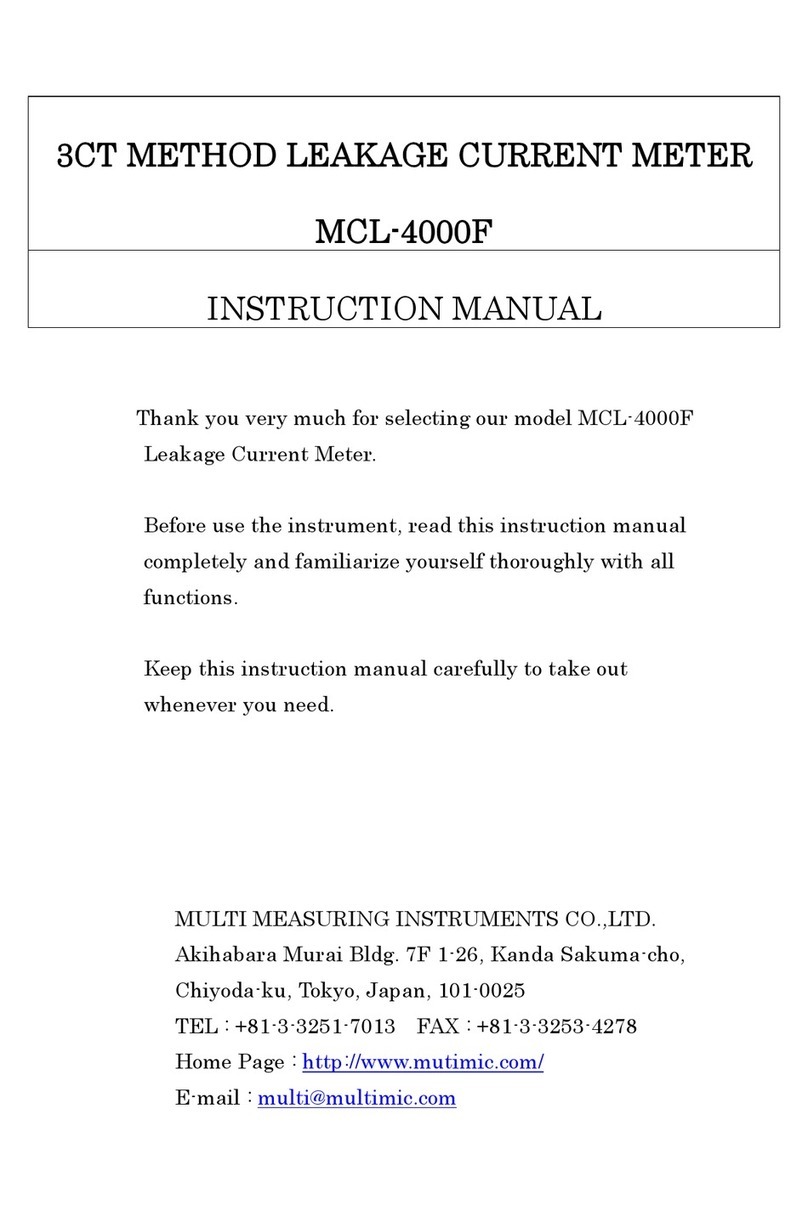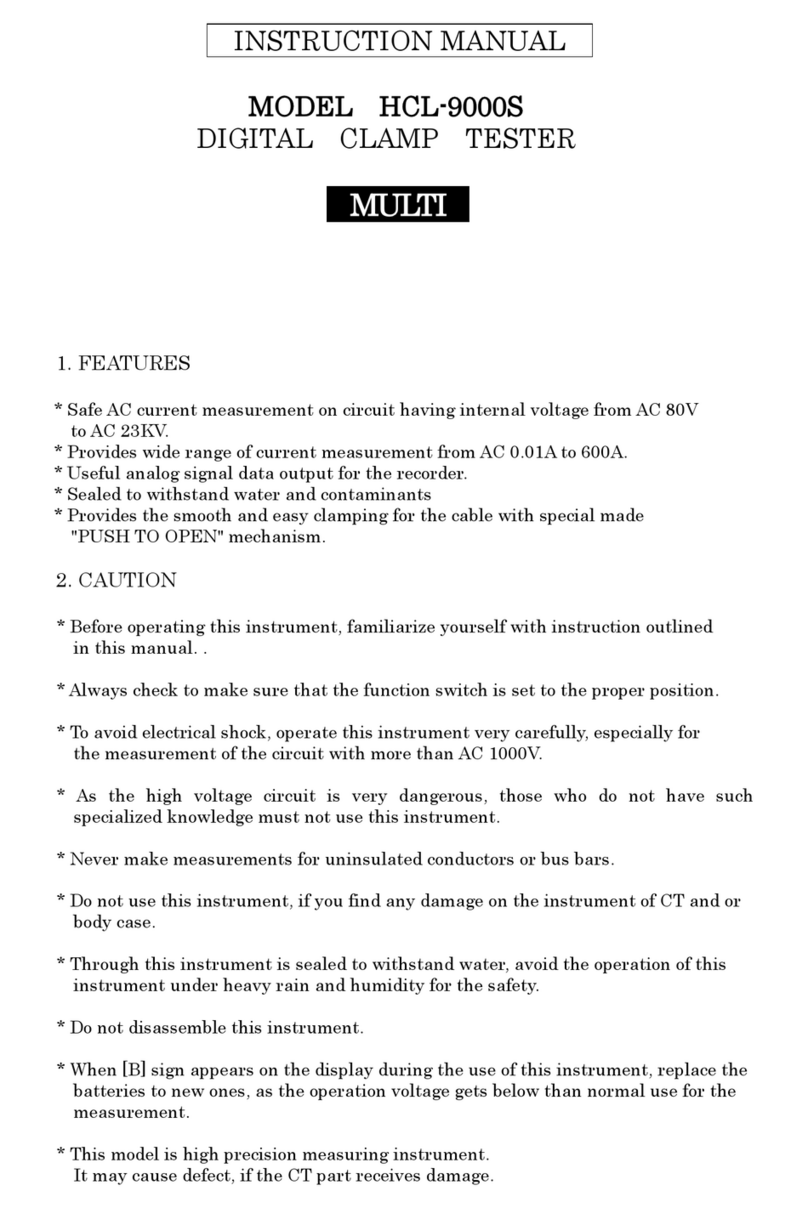3. Method of Use
* BEFORE VOLTAGE DETECTION
1) Check if there are no damage nor unusualness on the instrument.
2) Push test switch and check if the lamp and the peeper are correctly working.
(“L” lamp will turn on a light for approx. 2 seconds after pushing test switch)
3) Test the instrument by making detector tip touch to the circuit already known.
(Test switch is just for checking batteries).
4) Check if the sensitivity of the instrument is suitable for the circuit to be detected.
(Refer to ADJUSTMENT OF SENSITIVITY later mentioned)
5) Check if the clip is set into the body firmly.
* VOLTAGE DETECTION
Hold the grip firmly and make the detector tip contact to the object correctly.
(Grasp the side faces without touching the conductor rubber part of clip)
* CAUTION OF VOLTAGE DETECTION
1) This instrument is only for the use of AC low voltage circuit.
Never use to the circuit with more than AC 600V.
When detecting bus bar or bare terminal, do not use to the circuit with more than
AC 300V to the earth.
2) The instrument may work on without touch, nearby high voltage circuit (distance
within 2m). Also, if the sensitivity is set too high, the instrument may work on
just influenced by static electricity.
3) In case of two wires or three wires, they normally have one grounding wire and the
instrument will not work on to such grounding wire. Make voltage detection to every
wire in this case.
When the sensitivity of the instrument is not suitable for the circuit to be detected, it may
work on even to the grounding wire.
4) Cannot detect the wire completely covered by the insulated materials.
The instrument may work on to the metal pipe or case which is not grounding to the
earth.
5) Do not use the instrument in the rain.
6) When detecting the bare terminal, the instrument may work on even to the earth terminal
sometimes up to the condition of circuit voltage.
4. Adjustment of Sensitivity
1) Remove the clip from the body, keeping the detector tip touch to the cover of wire.
Then, adjust sensitivity by turning VR (use small driver).
In this case, you must touch to the (+) side of battery contact.
2) Turning to the right (HV) is getting sensitivity higher and to the left (LV) is getting lower.
3) The sensitivity is different depending on the wires to be detected.
Use the same wire with voltage as one to be detected for the sensitivity adjustment.
























